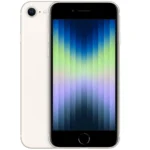How free apps make money is a question that often comes up from people using or downloading new programs. The answer is really a mixed bag as different apps have different monetization paths and goals. Some apps are legitimately Free with no want or desire to make any money (think PBS Kids, etc.) Then there are early-stage apps that are just trying to build a user base so they, too, could legitimately be giving their product away for free. Moving on there are apps from larger companies that could very well be free because their goal is awareness or brand recognition for another product. There are a lot more examples of these types of scenarios – but in total, these all represent a very small portion of applications people actually use and download. The vast majority of “free” apps fall into 1 or more of these 4 categories:
- Apps that make their money from advertising
- Apps that make money from micro-transactions
- Freemium apps (base model is free with the goal for you to upgrade)
- Apps that sell data collected about you
There’s a popular saying in tech that “If you are not paying for it, you’re not the customer; you’re the product”. Social media apps really pioneered that business model by pitching their huge user bases to advertisers who would then, in turn, pay the bills. And many of these supposedly “Free” apps are huge revenue drivers for very large companies. Advertisements, in-app purchases, and subscriptions are very lucrative methods that developers use to make money from users without upfront charges. These methods are chosen based on the app’s target audience, functionality, and the developers’ revenue goals.

How Apps Generate Revenue Without a Price Tag
Many people love free apps. After all, who doesn’t love getting something for nothing? But creating, maintaining, and updating apps takes a lot of work. So it’s only natural to wonder how those developers are paid. Here’s the scoop on how free apps actually make money.
In-app purchases
Lots of free apps tempt you to spend money within the app. You can buy things like new levels in a game, virtual currency, or cosmetic upgrades for your character. Other apps let you remove ads or get premium features with in-app purchases.
Subscriptions
Have you ever downloaded a free app that gave you limited access and then asked you to pay a monthly fee to get all the features? That’s a subscription model in action! This is common with fitness apps, music apps, or educational programs.
Advertising
This is probably the most obvious way free apps earn income. Here’s how this strategy works:
- Banner ads: These are displayed at the top or bottom of your screen.
- Interstitial ads: These large ads pop up and might temporarily interrupt your use of an app.
- Video ads: Sometimes you need to watch short video ads to earn rewards within an app or to get more features.
Selling Data
This method is controversial, but very common. Many free apps track your activity and gather data about you. This includes details like your interests, what websites you visit, or even your physical location. This valuable data is then sold to advertisers who want to target their ads more effectively.
Table: Free App Revenue Models
| Model | Description | Examples |
|---|---|---|
| In-app purchases | Users buy virtual goods, extra features, or remove ads from within an app | Games, photo editing apps, dating apps |
| Subscriptions | Users pay a recurring fee for full access to the app’s content or features. | Fitness apps, streaming services, language learning apps |
| Advertising | The app displays ads to users. | Social media apps, casual games, weather apps |
| Data selling | The app collects user data and sells it to third parties for targeted advertising. | Many types of free apps, unfortunately! |
Key Takeaways
- Free apps can be profitable through methods like advertising, in-app purchases, and subscriptions.
- Choosing the right monetization strategy depends on the app’s audience and features.
- Balancing revenue generation with user experience is crucial for an app’s success.
Monetization Models for Free Apps
Free apps make money through various models without charging users for the initial download. Here’s a look at the most effective strategies.
Advertising Model
The advertising model is a primary way for apps to earn revenue. Apps display various ad formats like banner, native, and video ads. They earn money based on different metrics such as cost per click (CPC), cost per view (CPV), or cost per install (CPI). Networks like AdMob connect app owners with advertisers and manage the ads within the app. Apps with high download numbers and user engagement can generate significant revenue from ads.
In-App Purchases and Freemium Strategy
In-app purchases allow users to buy extra features or content within an app. The freemium model offers a free app with the option to pay for additional features. In-app items can be consumable, like in-game currency, or non-consumable, such as new game levels or ad-free experiences. This model focuses on providing value that encourages users to pay for enhanced functionality.
Subscriptions
Subscription models provide ongoing revenue for app developers. Users pay for renewing subscriptions on a regular basis to access content or services. Some apps also offer non-renewing subscriptions which are a one-time payment for a set duration of access. Many apps offer a free trial period before charging for the subscription to let users evaluate the value of the premium offering.
Sponsorship and Affiliate Marketing
Sponsorship involves partnering with brands to create integrated content, whereas affiliate marketing lets an app earn commission by promoting other companies’ products or services. With these models, apps can align with their target audience’s interests and habits to introduce relevant offers, creating a win-win situation for both users and app owners.
Selling Data and Market Research
Some apps collect user data ethically with user consent to understand user behavior and trends. They can then sell this valuable market research to other businesses seeking insights into consumer habits. It is crucial for app owners to manage this process transparently respecting user privacy.
Merchandising and Physical Purchases
Apps can also generate revenue by selling merchandise or physical goods. Users can buy items related to the app, like brand merchandise or products featured within the app. This method works well when the app has a devoted user base and the products offered align with the users’ interests.







